Nothing ever stays the same for long, and the new Orbea Orca 2024 is about to shake things up once more! The Basque manufacturer have seen the light, and decided to shift away from all-round aero bikes and return to a more traditional distribution of roles. But can the Orca 2024 assert itself as a climbing bike and revive the era of lightweight road bikes?
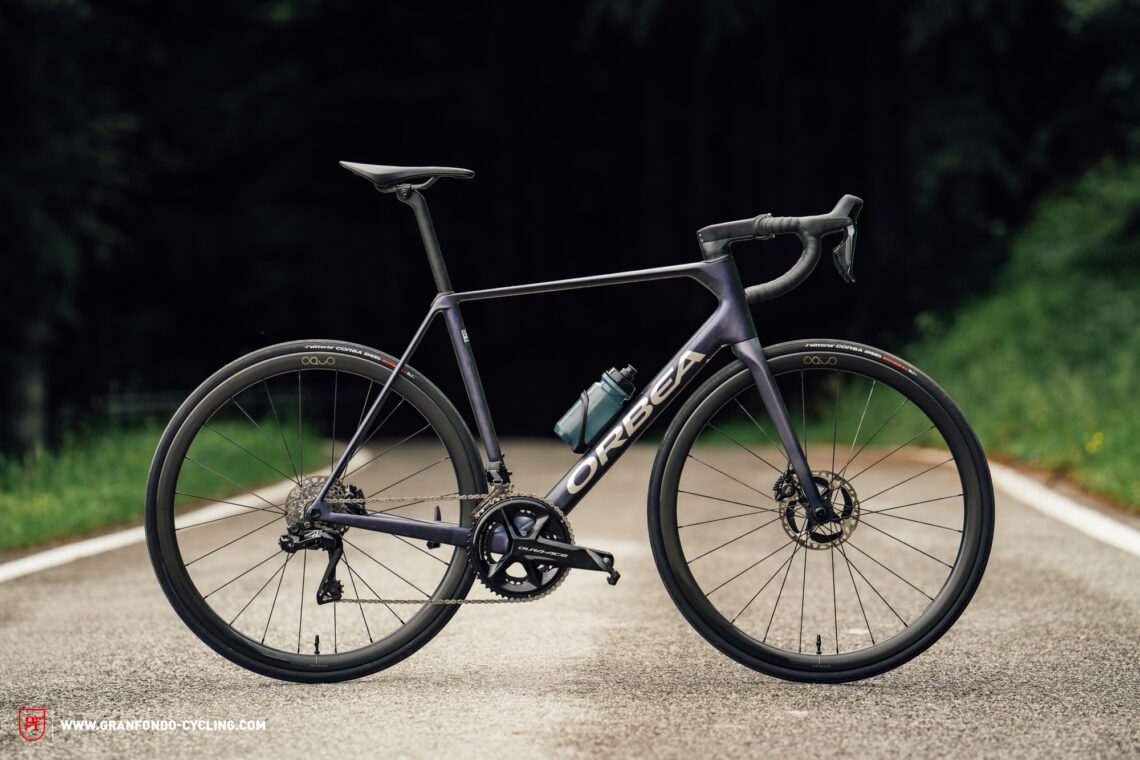
Not long ago, classic climbing bikes like the new Orbea Orca 2024 were declared dead, and the era of nimble and light bikes seemed to be over. The new, unifying genre of all-rounder race bikes was thought to be the answer, with a focus on maximum aerodynamics and minimum weight. Although these bikes may be surpassed by the specialists in their respective fields of expertise, they are designed to excel with consistently good performance in any terrain – at least in theory. After all, there’s no point being first to the summit, if you’re last on the descent.
However, this is where the crux of the matter lies. Especially in steep and slow terrain, gravity still determines who climbs the mountain the fastest. That’s exactly what Orbea thought, too, and reinvented the new Orca 2024 under the motto “Praise The Light”. But how does the bike perform in our first test, and what do the mysterious OQUO, MYO, and OMX signify?
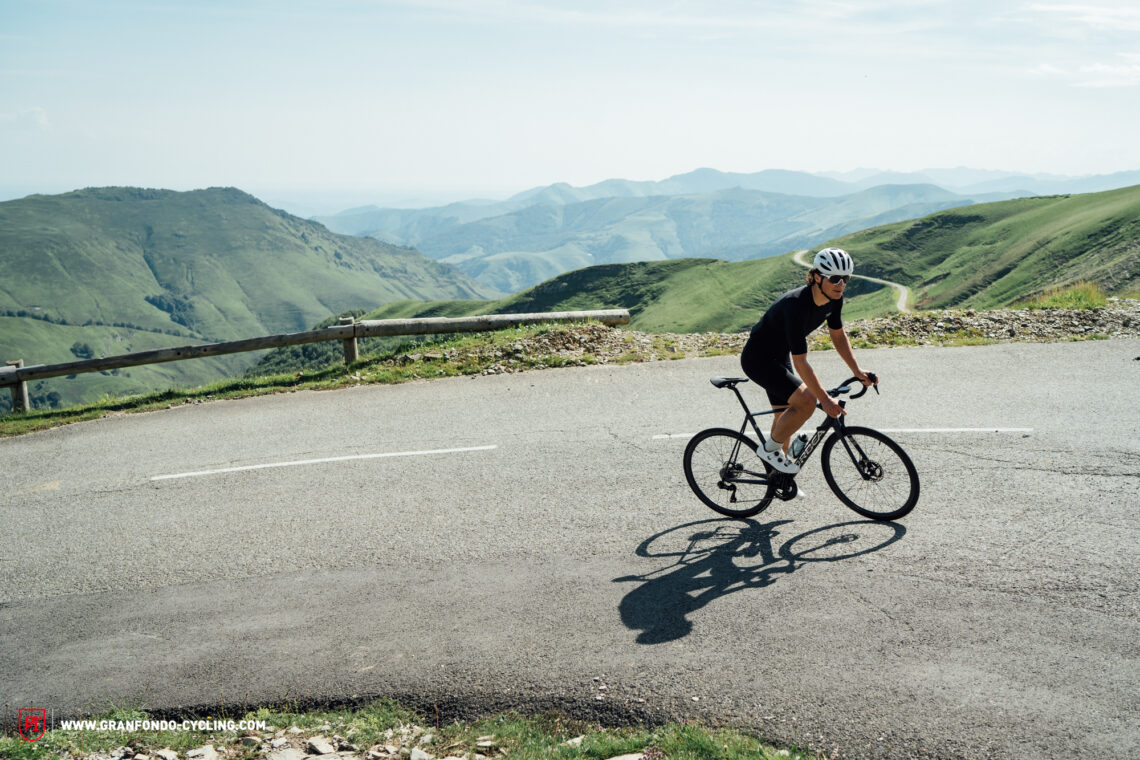
Why the Orbea Orca 2024 is not outdated
The predecessor of the new Orbea Orca 2024 was also an all-rounder, combining aero and lightweight construction, and was entirely in line with the trends of its time. However, times have changed, and pure lightweight bikes are undeniably faster in certain situations. Particularly at speeds below 15 km/h, a bike’s aerodynamics can sometimes be more of a hindrance than an advantage due to the extra weight, lending a sluggish, heavy ride quality.
This is where the new Orbea Orca 2024 comes in. The pro peloton is increasingly coming on board with this line of thinking. Jumbo-Visma are probably one of the best-known examples, as their riders in yellow are renowned for changing bikes in the midst of a race. Even during time trials, the switch to climbing bikes is not uncommon. And if it works for the pros, it certainly makes sense for us regular riders too, right?
Let’s not forget that we are not professionals; we ride bikes that are fun and motivate us, so the sensation of speed is arguably more important than the speed itself. We can’t simply switch bikes and choose the right one for the respective terrain. Plus, a few seconds lost on flat terrain don’t bother us if we enjoy the bike we’re riding.
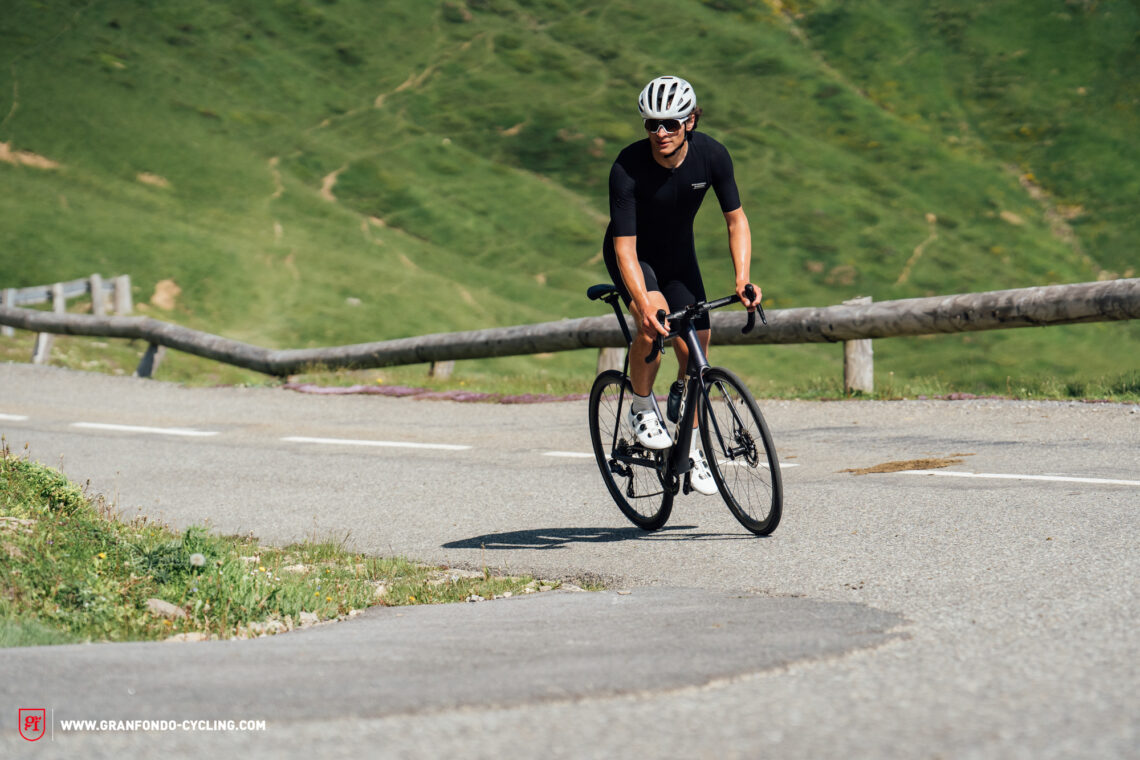
Orbea Orca 2024 – What defines a climbing bike in 2024?
Lightweight construction is the hallmark of climbing bikes, and the Orbea Orca 2024 is no exception. For the lightest possible frame, Orbea rely on round shapes and tube profiles. Not only does this offer high stiffness at a low weight, but also avoids sharp edges on the bike. This simplifies the manufacturing process – sharp corners are much harder to produce reliably, and can require the use of more fibre and resin to ensure strength, thus increasing the weight.. This design philosophy is noticeable throughout the bike: the seat post, seat tube, seat stays, and down tube are all round. Typical for Orbea, the front also features round shapes, especially at the transition between the head tube, down tube, and top tube. The fork also adheres to the lightweight construction ethos: extremely slim and elegant, it perfectly complements the bike. It’s no wonder that a bike built with Shimano DURA-ACE Di2 in size 53 weighs only 6.64 kg.
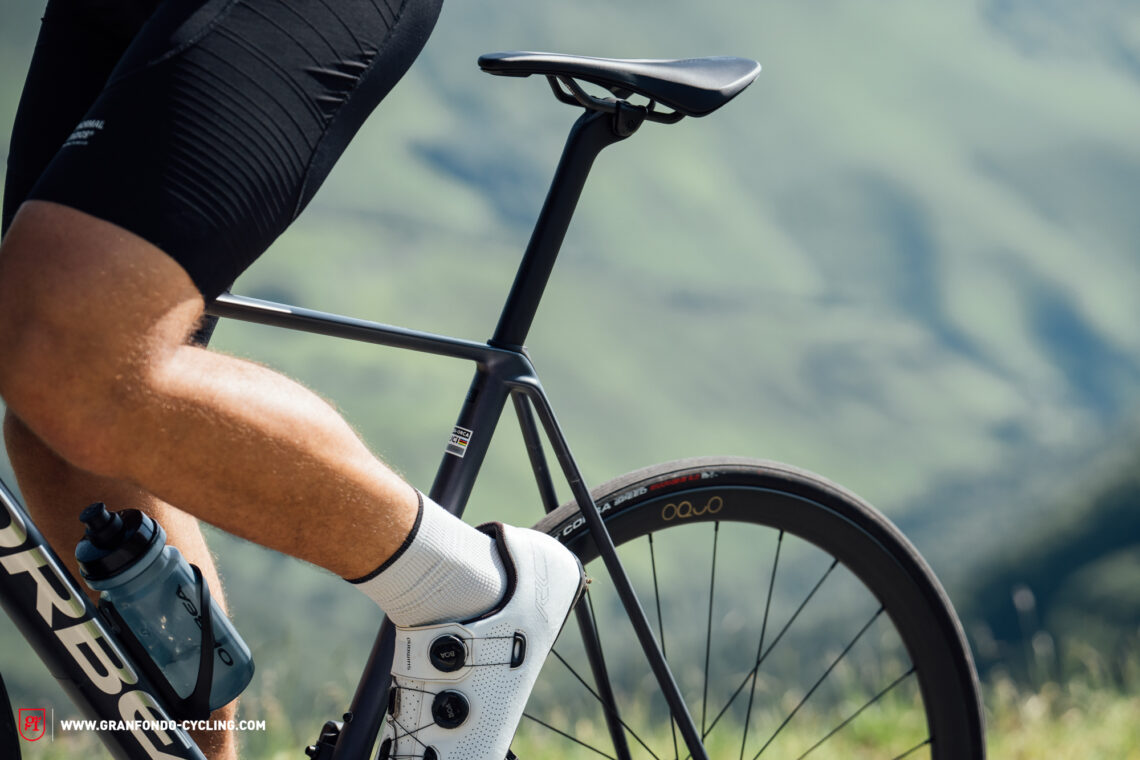
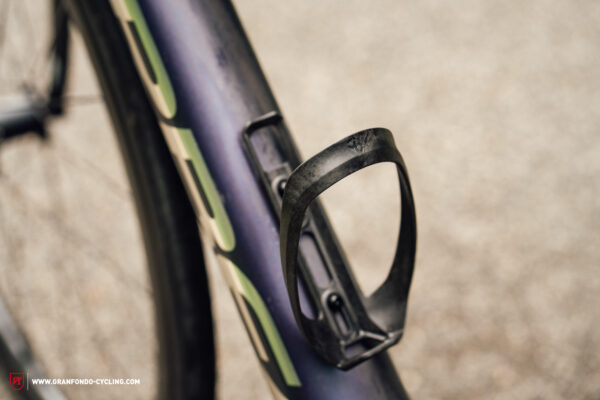
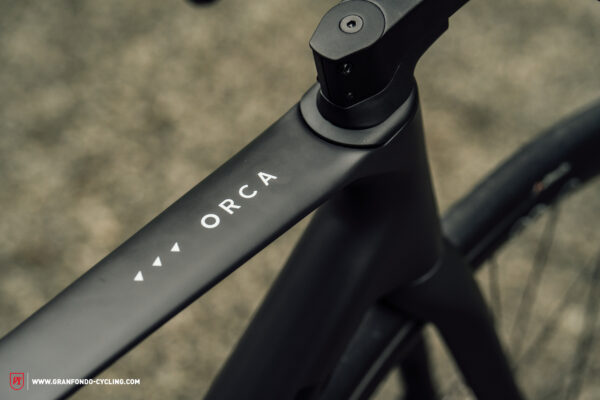
Orbea are also promoting the bike with the “stiffness-to-weight” concept, to keep the ride quality consistent across the frame sizes. The idea is that the stiffness of the frame is tuned to match the expected rider weight, so that the small sizes don’t feel excessively harsh or the large sizes too noodly.
The new Orca comes in two frame variants. OMX signifies the lighter, more expensive frame, which maintains the same stiffness with a reduced weight, resulting in a higher stiffness-to-weight ratio. OMR refers to the less expensive frame option, with slightly more weight and a lower stiffness-to-weight ratio. This difference gives each variant a distinct character and feel. Spoiler alert: Orbea have done a great job!
Despite the lightweight construction, Orbea don’t neglect aero features. Integrated cable routing, a narrow top tube, and slightly aero-optimised tube profiles contribute to the bike’s visually fast appearance. Interestingly, the bike wasn’t tested in a wind tunnel, a conscious decision by Orbea.
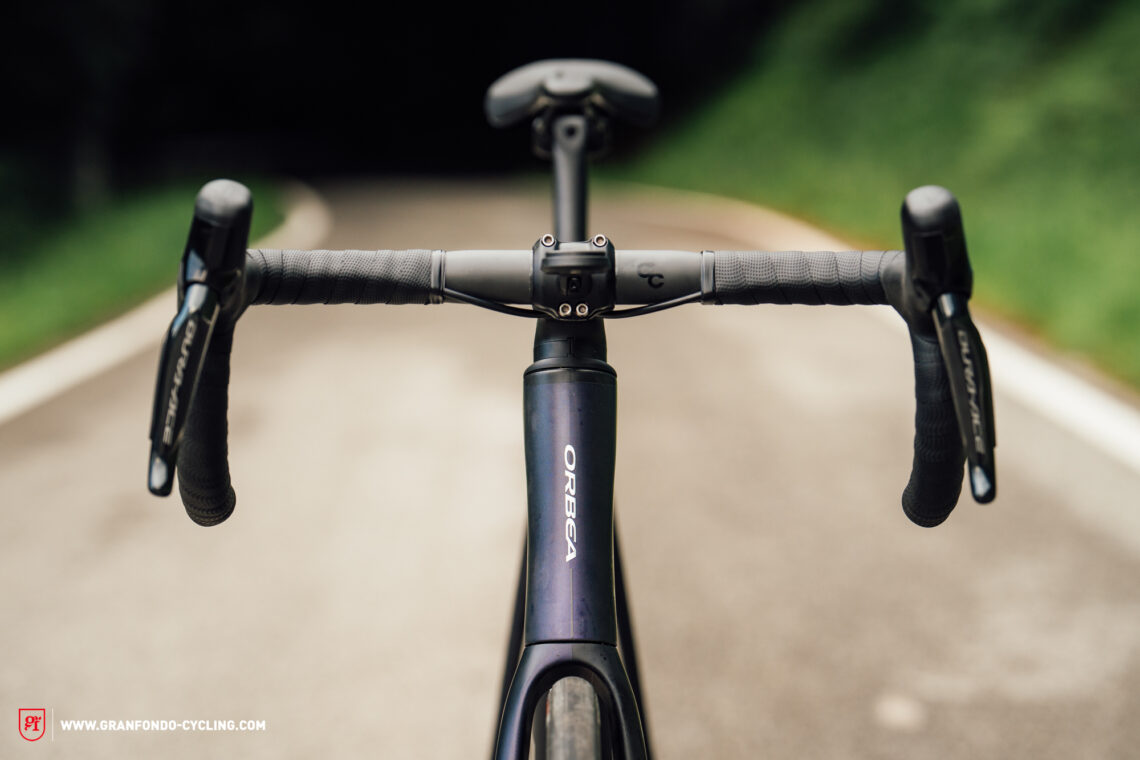

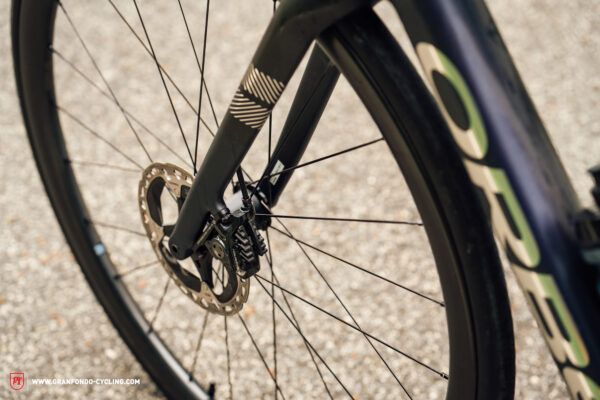
OQUO – Orbea’s state-of-the-art wheels on the new Orbea Orca 2024
To complement the new bike, Orbea’s somewhat tricky-to-pronounce component brand OQUO have introduced their first road and gravel wheels to the lineup. At the end of 2022, the brand was launched with MTB wheels and is now venturing into the drop bar bike realm. The new range features a variety of wheels: “Performance Road” caters to the traditional road racing segment, while “Road Control” encompasses the gravel/all-road wheels with a 25 mm inner width. Notably, the manufacturer from the Basque Country take particular pride in the “Mini Hook” – a hybrid of hookless and hooked rims that amalgamates the best of both worlds. By combining the larger internal width and improved tire profile of hookless wheels with the wide range of tire choices and pressures offered by conventional hooked wheels, it presents an intriguing concept.
The full OQUO wheel range spans from 35 to 57 mm deep carbon and alloy rims, all equipped with Zipp hubs. The manufacturing process, which involves a blend of “human touch” and automated production technology, takes place not far from Orbea’s headquarters. We had the privilege of peering inside OQUO’s workshops, and are eagerly anticipating the innovations that lie ahead.
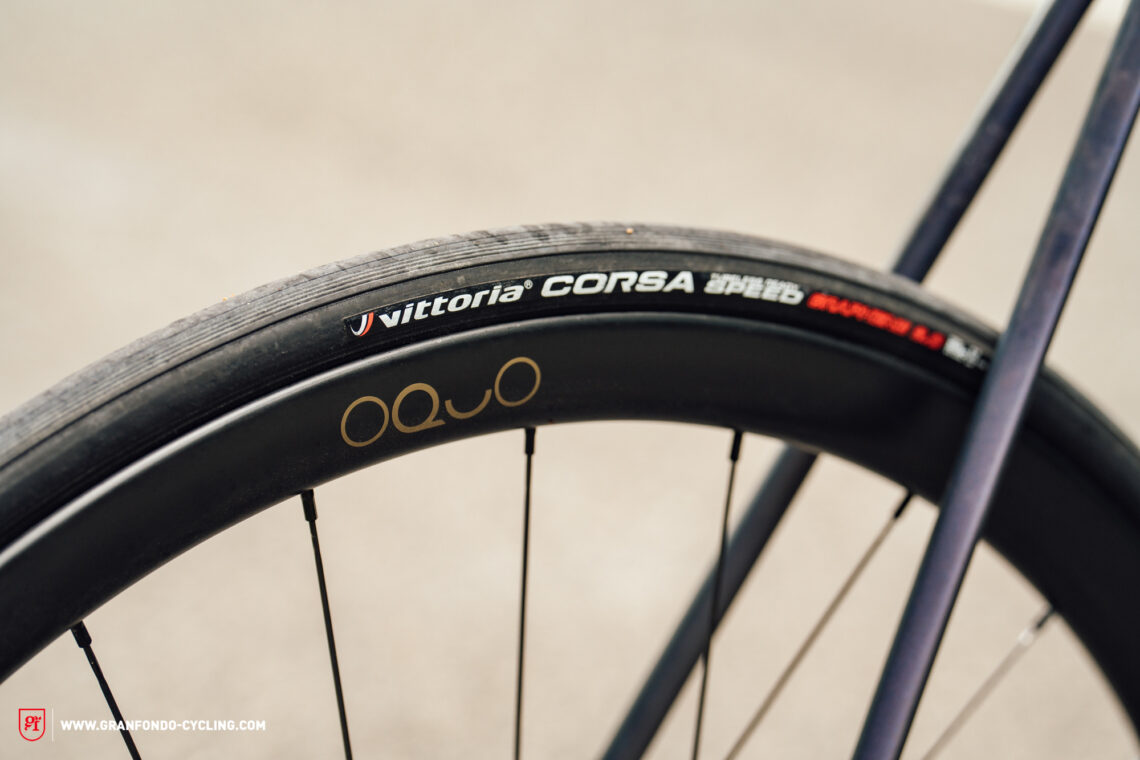
High-end and value for money – What you get with the new Orbea Orca 2024
We had the opportunity to extensively test the new Orbea Orca 2024 in the Pyrenees. Both the OMX and OMR frame variants were at our disposal, each equipped with OQUO wheels and fully decked out with OC components. By the way, OC is another of Orbea’s brands, manufacturing everything from seatposts to handlebars.
Our high-end and lightweight Orbea Orca M10i LTD PWR test bike, priced at € 10,999, comes with Shimano’s latest DURA-ACE Di2 groupset, including a power meter, that was unfortunately missing on our bike. The bike features an OC stem with an OC carbon handlebar, with fully internal cable routing, of course. For our test, we selected the high-end OQUO RP35 LTD carbon wheels with a 35 mm rim height and, in line with the racing spirit, equipped with Vittoria Corsa Speed tires in 25 mm. Overall, the equipment leaves little room for improvement; only a one-piece cockpit would be a welcome addition to the bike.
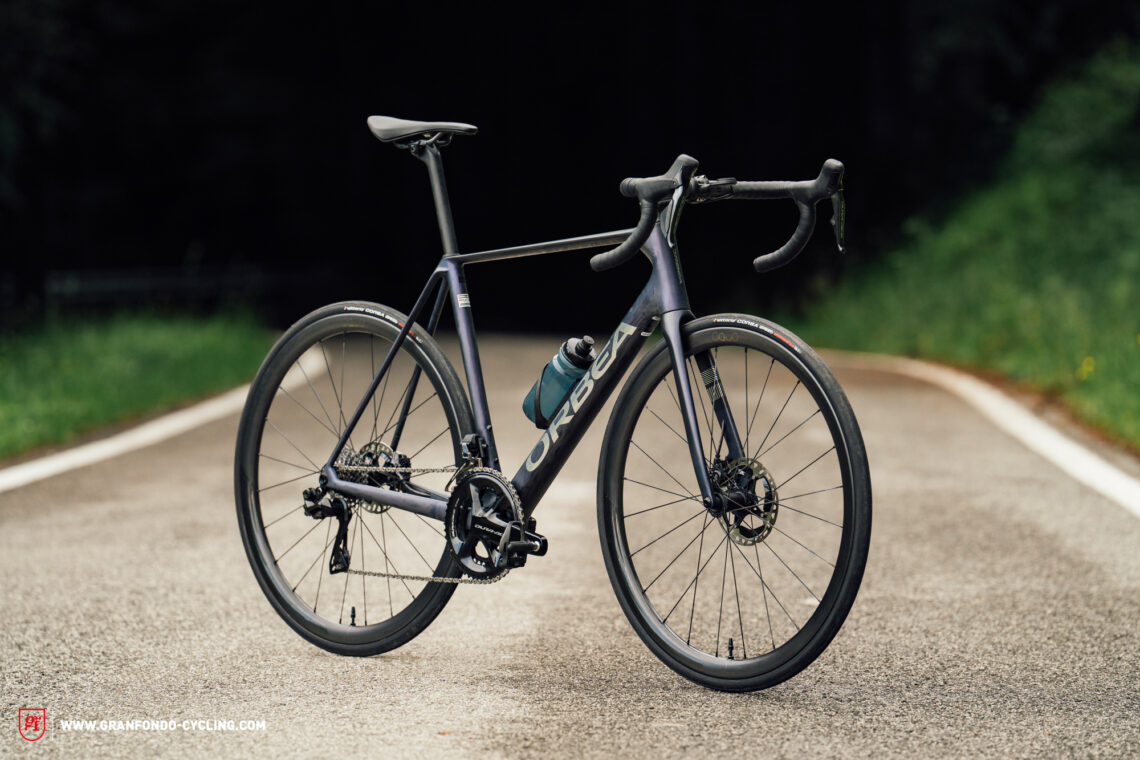
Orbea Orca M10iLTD PWR 2024
€ 10,999
Specifications
Seatpost OC Performance XP10-S Carbon 27.2 mm
Brakes Shimano DURA-ACE Di2 R9200 160/140 mm
Drivetrain Shimano DURA-ACE Di2 R9200 2x12
Stem OC Road Performance RP10 100 mm
Handlebar OC Road Performance Carbon RP11 420 mm
Wheelset OQUO Road Performance RP35 LTD 12 x 100/12 x 148 mm Through Axle
Tires Vittoria Corsa Speed G2.0 TLR 700 x 25c
Cranks Shimano DURA-ACE R9200 172,5 mm
Cassette Shimano DURA-ACE R9200 11-30T
Technical Data
Size 47 49 51 53 55 57 60
The OMR entry-level Orca M35i, priced at € 4,399, shifts reliably with the Shimano 105 Di2 groupset, featuring a 50/34 t chainset and 11-34 t cassette, and also comes with an OC cockpit, although it is entirely made of aluminium. Of course, OQUO wheels are also used here. The RP35 Team Carbon wheels are slightly heavier and have a different rim profile compared to the LTD version on the OMX models. The 28 mm Vittoria N.EXT tires, which are suitable for the intended use, perfectly complement the bike and provide enhanced safety even on rough roads.
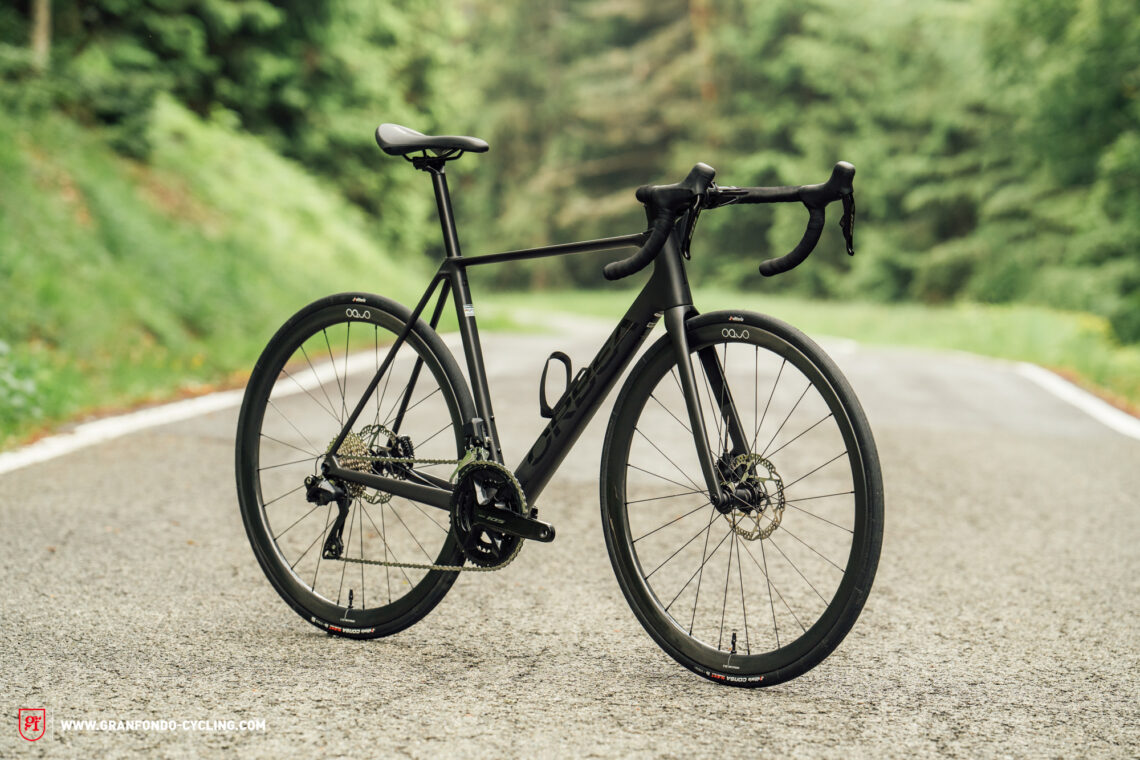
Orbea Orca M35i 2024
€ 4,399
Specifications
Seatpost OC Carbon 27.2 mm
Brakes Shimano 105 Di2 R7100 160/140 mm
Drivetrain Shimano 105 Di2 R7100 2x12
Stem OC Road Performance RP21 100 mm
Handlebar Orbea Eva 420 mm
Wheelset OQUO Road Performance RP35 Team 12 x 100/12 x 148 mm Through Axle
Tires Vittoria Corsa N.Ext G2.0 700 x 28c
Cranks Shimano 105 Di2 R7100 172,5 mm
Cassette Shimano 105 Di2 R7100 11-34T
Technical Data
Size 48 49 51 53 55 57 60
In general, Orbea have catered to everyone, offering enthusiast-friendly bikes starting from € 3,399 up to pro-level stunners with a price tag of € 10,999. Notably, the mid-price segment contains some real highlights, making it definitely worthwhile exploring their portfolio.
What MyO has to do with your custom Orbea Orca 2024
MyO – because Orbea don’t have enough abbreviations, TLAs and fancy PR terms yet, let’s add another one to the mix. However, MyO is actually quite straightforward and stands for “My Orbea”, referring to the configurator for customising the bikes. On their website, the bikes can be individually tailored from a range of colours and designs, and even personalised with your preferred choice of components. The bike is then meticulously hand-painted at the Orbea factory in the Basque Country, followed by final assembly in the same hall before being shipped to the customer.
What may sound like a lot of work and, potentially, an additional charge is actually available at no extra cost for most Orbea bikes. With the new Orbea Orca, all bikes from the € 4,999 M35i model upwards can be customised to suit using MyO.
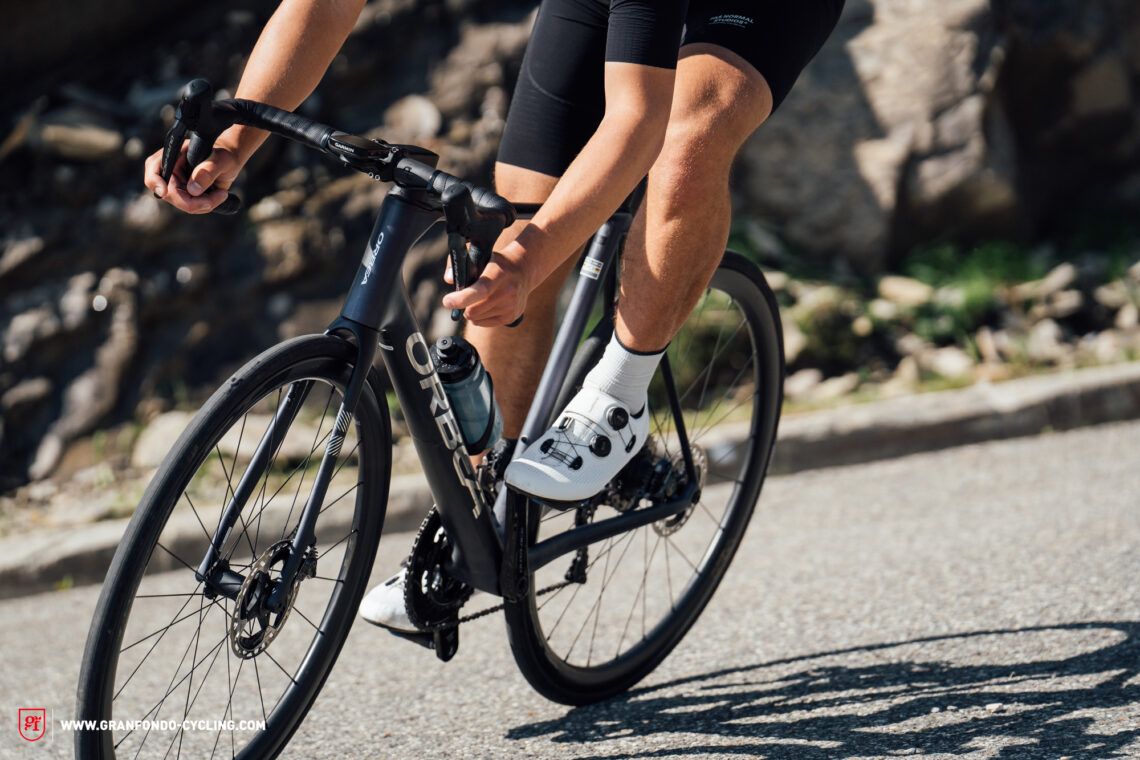
The well-proven geometry of the Orbea Orca 2024
Compared to its predecessor, not much has changed in the geometry, and that’s a positive. The tried and tested geometry of the Orbea Orca has proven to be excellent, so it would be a shame to make significant alterations. Orbea remain committed to the Orca concept, maintaining shorter chainstays for improved pedalling and acceleration, as well as a shorter wheelbase for a more agile and responsive bike. It’s these features that make the Orbea Orca perfectly suited for climbing.
Orbea Orca 2024
| Size | 47 | 49 | 51 | 53 | 55 | 57 | 60 |
|---|---|---|---|---|---|---|---|
| Seat tube | 440 mm | 460 mm | 480 mm | 500 mm | 520 mm | 540 mm | 570 mm |
| Top tube | 510.3 mm | 522.7 mm | 535.9 mm | 548.5 mm | 560.4 mm | 576.1 mm | 590 mm |
| Head tube | 110.5 mm | 118.2 mm | 134.6 mm | 152.9 mm | 173.1 mm | 191.2 mm | 218.3 mm |
| Head angle | 71° | 71.5° | 72.2° | 72.8° | 73° | 73.2° | 73.2° |
| Seat angle | 74.5° | 74° | 73.7° | 73.5° | 73.5° | 73.2° | 73.2° |
| Chainstay | 408 mm | 408 mm | 408 mm | 408 mm | 408 mm | 408 mm | 408 mm |
| BB Drop | 72 mm | 72 mm | 72 mm | 70 mm | 70 mm | 70 mm | 70 mm |
| Reach | 370 mm | 375 mm | 380 mm | 385 mm | 391 mm | 398 mm | 404 mm |
| Stack | 506 mm | 515 mm | 533 mm | 552 mm | 572 mm | 590 mm | 616 mm |
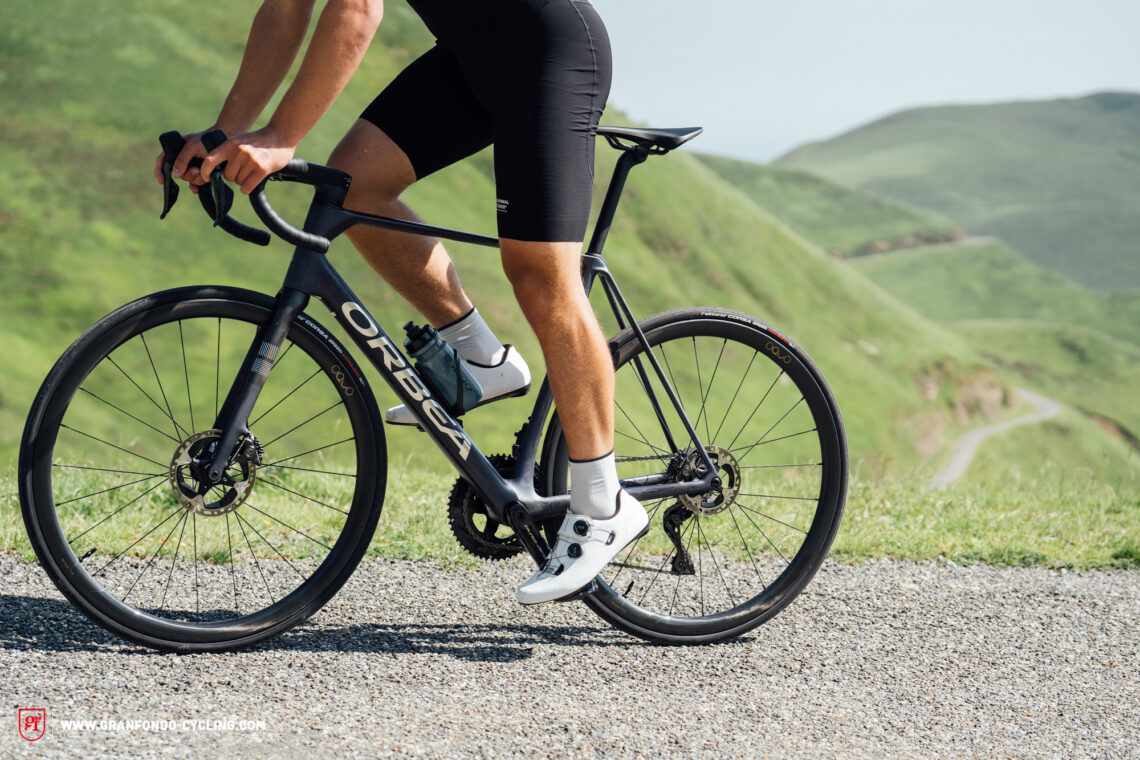
The Orbea Orca 2024 on the road
During our test ride, we could clearly discern the differences between the OMX and OMR models. The lighter and more expensive OMX Orca exhibited exceptional agility, responding swiftly to steering inputs and requiring minimal effort from the rider. It climbed effortlessly, and handled predictably through fast successive curves on the descents, eager to accelerate back out of the corners. As such, it proves to be the better option for athletic, experienced, and well-trained roadies. The choice of gear ratios and tires further reinforces our impression, as the Vittoria Corsa Speed offers excellent rolling speed and grip, at the expense of puncture protection and durability.
Thanks to the same geometry, the more affordable OMR model remains a reliable climbing bike, but its different stiffness-to-weight ratio makes it more forgiving and composed. It offers a higher sense of security and is not quite as razor-sharp as its OMX counterpart, making it suitable for beginners with less experience. And that’s obviously its intended purpose, as shown by the choice of tires and the more leisurely gear ratios. Both bikes share a good level of compliance and comfort.
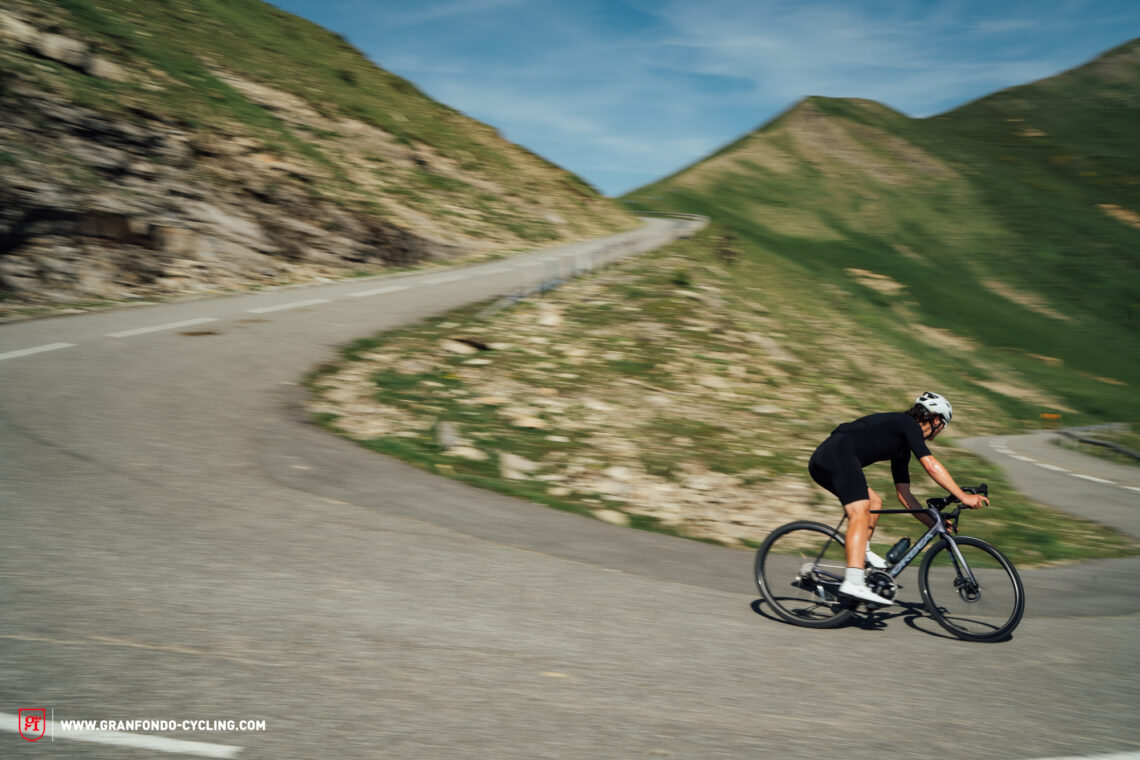
In the end, it becomes evident that neither of the bikes is designed to be an aero bike – far from it. Although both bikes roll impressively well, they won’t be able to match the straight-line speed of dedicated aero bikes, particularly on flat or rolling terrain. However, both bikes are at the top of their game when it comes to riding fun. Ultimately, the choice between the two depends on your personal preferences. While the significant surcharge on the OMX may be justifiable for some, it may not be worthwhile for others. We recommend the top frame option for athletic and experienced riders, as it offers enhanced performance and snappy handling. On the other hand, with the less expensive OMR frame, laid-back and leisurely riders will get their money’s worth.

Our conclusion on the Orbea Orca 2024
With the new Orca 2024, Orbea present a genuine climbing bike, breaking away from the trend of all-rounder race bikes in recent years. What may initially appear as a step backwards actually turns out to be a leap into the future, injecting new excitement into their range. The Orca brings a breath of fresh air to the somewhat standardised world of road bikes, delivering pure riding fun. With a high level of customisation, and a distinct difference between the OMX and OMR models, the Orbea Orca 2024 is undoubtedly worth considering.
Tops
- well thought-out climbing concept
- playful riding characteristics, especially fun on fast descents
- The OMX and OMR versions offer two bikes in one
- great value for money
Flops
- aero-optimisations are more style than substance

Did you enjoy this article? If so, we would be stoked if you decide to support us with a monthly contribution. By becoming a supporter of GRAN FONDO, you will help secure a sustainable future for high-quality cycling journalism. Click here to learn more.
Words: Calvin Zajac Photos: Orbea







